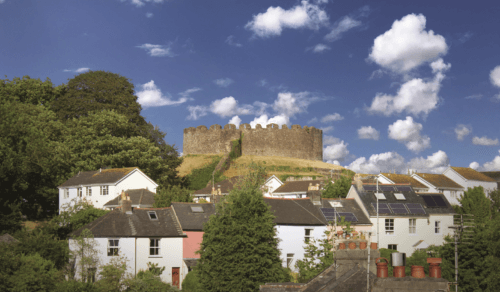
As tourism returns, Alan Payling suggests that Totnes and the surrounding area in South Devon is well worth a visit, with a lot of history and a lot of character that would make for a very economic excursion
I like Totnes. I like it a lot. Partly it’s the journey there from Torbay that I like. Once you get clear of Paignton on the A385, a smashing rural vista opens up in front of you. Ahead you have the might of Dartmoor standing high and proud on the horizon while you wind your way through the northern part of the South Hams and some of Devon’s rusty hills that roll away in all directions. It’s not far, but it’s a nice drive. When you reach the outskirts of Totnes, you drop down a hill. Arriving in Totnes, whether it be from Dartmouth on the A381, Western-By-Pass, or from Torbay when you drop down Bridgetown Hill, you get a fine view of the town sitting in the valley below you that the River Dart curves it’s way through. At the bottom of Bridgetown Hill, if you fork left into Bridgetown you take the old road into Totnes, via Bridgetown itself. You then cross over the Dart on the old bridge and you arrive in The Plains at the lower end of the town. It’s a great place to arrive in. There’s a sense that this is a special place with a unique identity and lots of character. Coach drivers have to turn right and will then immediately find the bus stop where they can drop their passengers. When they walk the short distance back to The Plains and look up the main street, Fore Street, the road rises towards the famous Eastgate arch that hangs over the road. If it feels like you’ve arrived in a medieval town, then you won’t be far wrong as Totnes does have a lot of history having once been a busy port dealing in wool exports and imports of wine. Totnes claims to have more listed buildings per head of population than any other town in the nation. Certainly, the merchants’ houses that date from the prosperous days of the 16th and 17th centuries when ships still sailed up the river to trade add a lot of character to the town. The Elizabethan Butterwalk, a Tudor covered walkway that offered shelter for the sellers of dairy products, is but one of many historic buildings here.
[…]
By subscribing you will benefit from:
- Operator & Supplier Profiles
- Face-to-Face Interviews
- Lastest News
- Test Drives and Reviews
- Legal Updates
- Route Focus
- Industry Insider Opinions
- Passenger Perspective
- Vehicle Launches
- and much more!


